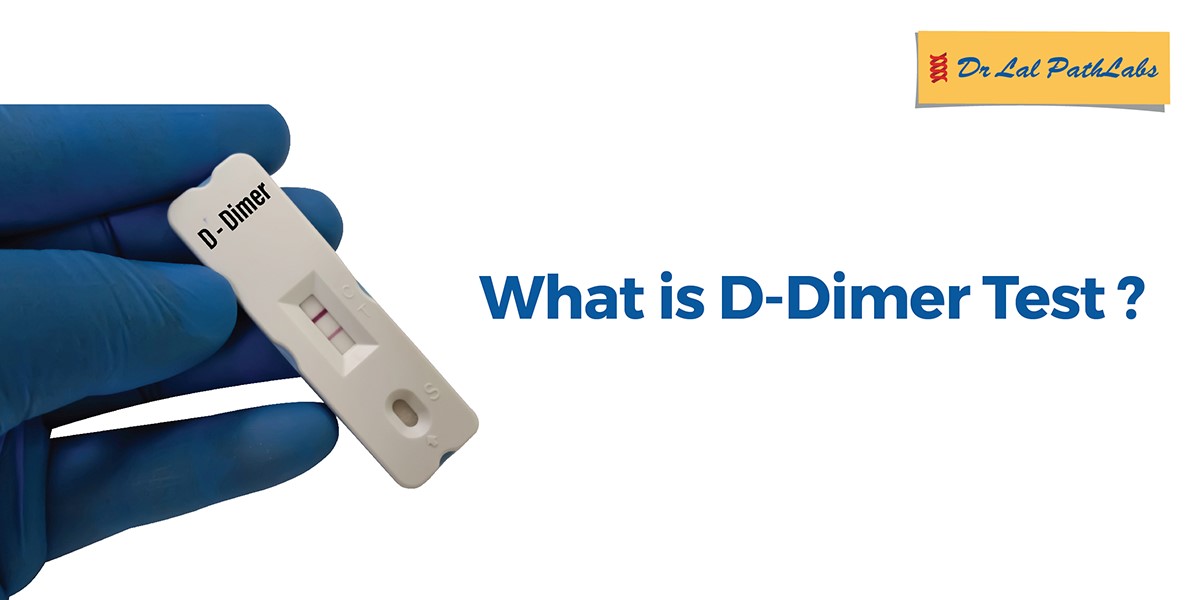D-Dimer Test – What It Is, Who Needs It, and Its Risk Factors
What is D-Dimer Test?
D-dimer test is a very commonly used blood test that helps the doctor determine or rule out suspected coagulation or clotting disorders.
D-dimer is a protein fragment produced in the body when a blood clot dissolves.
 To prevent too much blood loss in case of an injury, blood clotting is a fundamental process that takes place within the body. The body kick starts a process known as hemostasis to form a blood clot and stop the bleeding whenever a blood vessel or tissue in the body is injured and bleeds. But in certain conditions, blood clots form even unnecessarily, without injury or requirement. These conditions may be very serious and, in some cases, fatal.
To prevent too much blood loss in case of an injury, blood clotting is a fundamental process that takes place within the body. The body kick starts a process known as hemostasis to form a blood clot and stop the bleeding whenever a blood vessel or tissue in the body is injured and bleeds. But in certain conditions, blood clots form even unnecessarily, without injury or requirement. These conditions may be very serious and, in some cases, fatal.
High levels of D-dimer in the blood can be an indication of a blood clotting disorder since the level of D-dimer can quickly rise when there is significant formation and breakdown of blood clots in the body.
What is the D-dimer test used for?
Doctors most often use the D-dimer test to diagnose blood clotting disorders such as:
- Deep vein thrombosis (DVT): It is a disorder caused by the creation of a blood clot in a deep vein in the body, most commonly in the legs, thigh, or pelvis, and can also occur in other body parts, including the arm, brain, intestines, liver, or kidney. It is symptoms are pain in the leg or swelling.
- Pulmonary embolism (PE): It is a condition that happens when a blood clot is in the lung that flows through the bloodstream from another part of the body.
- Disseminated intravascular coagulation (DIC): This condition causes too many blood clots to form in the body, which can cause organ damage and other serious complications.
- Stroke: A obstruction in the blood flow to the brain.
Who is at risk for developing blood clots?
The risk factors for developing inappropriate or abnormal blood clots may include the following:
- Major surgery or experiencing trauma
- Prolonged immobility
- Birth control pills or hormone replacement therapy
- Pregnancy
- A family history of blood clotting disorders
- Certain types of cancer
- Obesity
- Smoking
- Advanced age
- Chronic inflammatory diseases
Why do I need a D-dimer test?
The doctor may recommend a D-dimer test if a person is experiencing symptoms such as:
- Leg pain or tenderness
- Swelling of the leg or arm
- Red streak on the legs
- Sudden shortness of breath
- Cough
- Sharp chest pain
- Rapid heartbeat
- Pain in the back
- Bleeding gums
- Nausea or vomiting
- Severe muscle pain and abdominal pain
- Seizures
- Sudden confusion
- Sudden dizziness or trouble walking
The doctors may also be recommended to:
- Diagnose disseminated intravascular coagulation (DIC) and monitor the treatment effectiveness.
- Diagnosis and monitoring of disseminated intravascular coagulation (DIC).
What happens during a D-dimer test?
A blood sample will be drawn from an arm vein by a healthcare expert. The doctor may instruct you if any specific preparations are required for the D-dimer test.
What are the risks of the D-dimer test?
The D-dimer test is a safe, standard test with very minimal risks involved, such as:
- Bleeding
- Lightheadedness
- Bruising
- Infection
Disclaimer:
This blog is for informational purposes only and should not be construed as advice or as a substitute for consulting a physician. It is not a substitute for medical advice or treatment from a healthcare professional.













